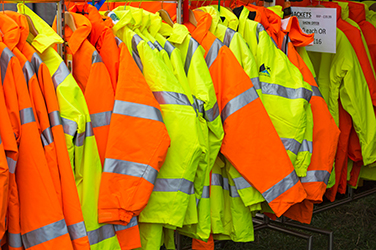- Free Article: No
- Contents Category: Language
- Custom Article Title: On boganism: Reflections on class and Australian English
- Review Article: Yes
- Article Title: On boganism
- Article Subtitle: Reflections on class and Australian English
- Online Only: No
- Custom Highlight Text:
In the introduction to their excellent collection of essays, Class in Australia (2022), Jessica Gerrard and Steven Threadgold note the eclipsing of the word class in our public discourse. Other descriptive markers are more commonly used, words such as disadvantage (by scholars) and bogan (in popular culture). In my own work on the Australian English lexicon, I have been intrigued by the contemporary language of class. The words we choose to use when talking about class can tell us much about changing popular perceptions.
- Featured Image (400px * 250px):

- Alt Tag (Featured Image): Amanda Laugesen on boganism
By the 1990s, use of the word had exploded and it had come to gather new meanings. Now a bogan could be someone who was considered to be uneducated, unsophisticated, or uncouth in some way. Also, a particular trait could be seen as bogan. The website Things Bogans Like suggests numerous things that can be identified as such: Contiki tours, watching A Current Affair, and Pandora bracelets among them. Much of this imagining of what it is to be a bogan is to do with taste and education, rather than one’s income or occupation.
Bogan was, and is, therefore a hard word to define. It is not synonymous with ‘working-class’, even though it carries class overtones. Importantly, it is also invested with racial overtones – the bogan is nearly always an Anglo-Australian and is often perceived to be, if not racist, anti-immigrant. Recent migrants, even if in working-class occupations, would not be called bogans. It isn’t, however, a strongly gendered word. Unlike other archetypal Australian figures such as the larrikin, the bogan is not necessarily a male. There is also an element of performance to boganness: it can be something you choose to express as you unleash your inner bogan.
Some have argued that bogan is a slur, expressing contempt for those who identify with white working-class culture. Certainly, there are many ways in which bogan is used in a derogatory way; at the same time, the evidence of usage – and its relationship to ideas of performance and Australianness – suggests that it is also a badge worn proudly and can be used ironically.
The very slipperiness of bogan as a concept means that it is difficult to talk about class in simple ways when we talk about bogan. Bogan might be embraced as an identity, but it is one that gathers strength from mocking pretensions and high culture, not from challenging the structural inequalities of Australian society.
Bogan (and its derivatives) probably peaks in the period from the mid-2000s to the mid-2010s. It is possible we are seeing something of a slow decline in its productivity and usage, although it is perhaps premature to identify any definite downward trend.
Arguably, however, the last decade of Coalition government has seen some interesting shifts in the politics and language around class. John Howard’s government (1996–2007) was responsible for the elevation of the battler to semi-mythic status: the late 1990s saw significantly increased use of the word in our media. The aspirational working classes – the little Aussie battlers – were central to the political language of the Howard years. Under the Coalition governments of Tony Abbott, Malcolm Turnbull, and most especially Scott Morrison, battler has continued to be used, but we have also seen the increasing focus on the small business owner, the tradie, and the hi-vis wearer. Here the ‘quiet Australians’ can be middle- or working-class, and are as likely to own a business as work in one. Arguably, like bogan, battler has become unmoored from any clear class identity.
The use of hi-vis in our political and cultural discourse is a more recent development. Wearing hi-vis safety gear became common in the 2000s. From around 2010, politicians were getting in on the act by being seen in hi-vis. This tendency of politicians to be seen wearing hi-vis and to ally themselves with those who work in the hi-vis industries, including mining, led to the development of a figurative sense of hi-vis by the end of the 2010s. Much of this figurative usage is connected to politics – and in particular the politics of the Morrison government.
It is also during the Morrison years that we see the clear entrenching of a language describing those considered to be inner-city ‘elites’. These are often derogatory terms used to mock those who hold progressive or leftist political views and are an evolution of earlier terms such as chardonnay (or champagne) socialist. Terms such as latte belt, latte line, latte set, and latte-sipper emerged in the late 1990s and early 2000s. They aren’t always expressly political: sometimes they are used to refer to a particular area that is considered to be affluent and those that live there. These are usually suburbs in Sydney and Melbourne, and the implication is that the people who live there spend their time frequenting trendy cafes and drinking lattes.
Variations such as goat’s cheese curtain and quinoa curtain are recorded a decade later; through the 2010s and into the 2020s, they become part of our language. While sometimes descriptive in the sense of just referring to an affluent or trendy area, these terms are increasingly used to stereotype those who live in inner-city areas and their alleged political views. Notably, in this discourse, the person who lives behind the ‘curtain’ or is part of the ‘set’ is regarded as likely to vote for the Greens.
The election of a new Labor government might well see our language around class shift again, in potentially fascinating, perhaps even unpredictable, ways. Paying closer attention to the kind of language we use around class may allow us to reflect on what these words – some of them immensely powerful in the Australian imagination and identity – can obscure. In doing so, we may be better able to talk about the inequalities that continue to shape the lives of many Australians.



Comments powered by CComment